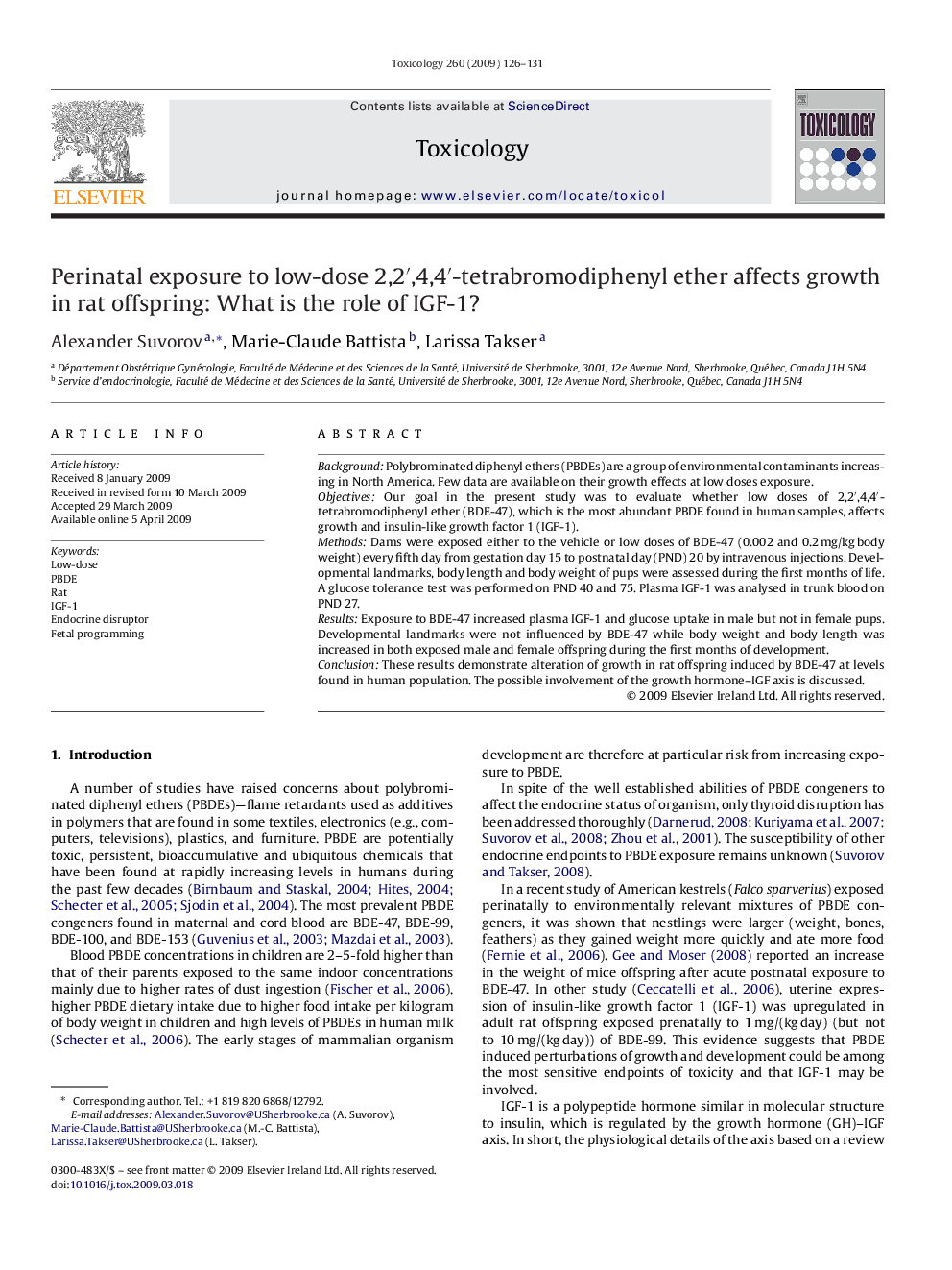| Article ID | Journal | Published Year | Pages | File Type |
|---|---|---|---|---|
| 2596853 | Toxicology | 2009 | 6 Pages |
BackgroundPolybrominated diphenyl ethers (PBDEs) are a group of environmental contaminants increasing in North America. Few data are available on their growth effects at low doses exposure.ObjectivesOur goal in the present study was to evaluate whether low doses of 2,2′,4,4′-tetrabromodiphenyl ether (BDE-47), which is the most abundant PBDE found in human samples, affects growth and insulin-like growth factor 1 (IGF-1).MethodsDams were exposed either to the vehicle or low doses of BDE-47 (0.002 and 0.2 mg/kg body weight) every fifth day from gestation day 15 to postnatal day (PND) 20 by intravenous injections. Developmental landmarks, body length and body weight of pups were assessed during the first months of life. A glucose tolerance test was performed on PND 40 and 75. Plasma IGF-1 was analysed in trunk blood on PND 27.ResultsExposure to BDE-47 increased plasma IGF-1 and glucose uptake in male but not in female pups. Developmental landmarks were not influenced by BDE-47 while body weight and body length was increased in both exposed male and female offspring during the first months of development.ConclusionThese results demonstrate alteration of growth in rat offspring induced by BDE-47 at levels found in human population. The possible involvement of the growth hormone–IGF axis is discussed.
